| Reviews & Columns |
|
Reviews DVD TV on DVD Blu-ray 4K UHD International DVDs In Theaters Reviews by Studio Video Games Features Collector Series DVDs Easter Egg Database Interviews DVD Talk Radio Feature Articles Columns Anime Talk DVD Savant Horror DVDs The M.O.D. Squad Art House HD Talk Silent DVD
|
DVD Talk Forum |
|
|
| Resources |
|
DVD Price Search Customer Service #'s RCE Info Links |
|
Columns
|
|
|
Classic Educational Shorts, Volume 5: Rules for School
I lived this stuff...and believed it all. Kino Classics has released Classic Educational Shorts, Volume 5: Rules for School, a single disc collection of 15 educational/social guidance shorts from the 1940s through the 1980s, focusing on how to make little Johnny more conscientious, more safe, more quiet―and most importantly―more obedient in school. Selected by A/V Geeks founder Skip Elsheimer (who provides the informative, amusing "film notes" for each entry that I've reprinted below), the short films included in these Classic Educational Shorts collections were shown to American school kids like myself on noisy, squelchy 16mm projectors right up to the 1980s. If you were a movie-crazed kid like I was, the Friday afternoon announcement that your teacher was fried after a long week of trying to control her little bastards and needed 15 measly minutes of peace and quiet had found an interesting educational film that the class might enjoy, was a cause for peripatetic excitement ("can I pleeeeeeeeze thread the projector and run the movie?"). Thanks to MST3K, most people now watch these public domain social guidance films for the purpose of snarky, self-satisfied derision, I suspect―admittedly something I do, as well (wait till future generations of smart-assess get a load of the crap you take seriously today...). I do, though, have a genuine fondness and even respect for these little orphaned films (as I'm sure lots of other movie lovers do), perhaps born largely out of nostalgia, that makes a collection like Classic Educational Shorts, Volume 5: Rules for School a cinch for a DVDTalk "highly recommended" buy. Let's look very briefly at each entry.
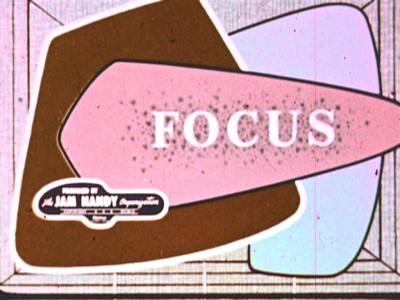
SCHOOL RULES: HOW THEY HELP US
Coronet 1953 Color 10 min.
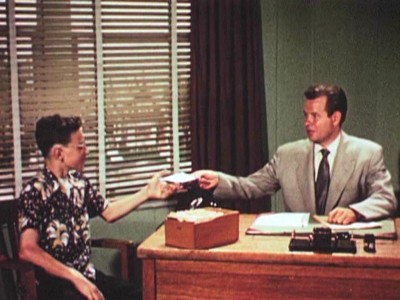
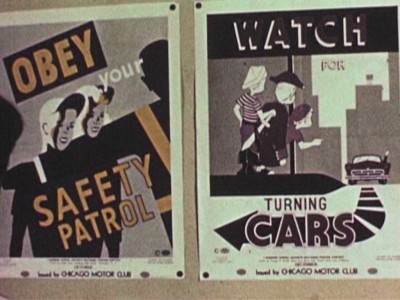
If you can get past the notion that kids used to be sent to the principal's office for not bringing their gym shoes to class (...or your brief musings about future sexy librarian Betty sternly reprimanding you), School Rules: How They Help Us speaks directly to today's "nothing but exceptions to the rules" society. It's easy to laugh at these films' depictions of straight-laced teachers' and adults' unyielding admonitions about the smallest infractions...but they only seem funny today because of how far we're traveled in the other direction. While you're laughing at the cinematic world of these Classic Educational Shorts, remember you live in a society today where little 6-year-old girls are suspended from school for bringing Hellow Kitty bubble-shooting toy guns to school. You tell me what world seems more ridiculous....
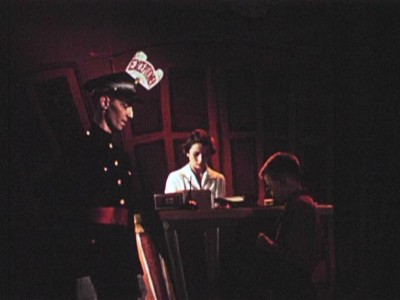
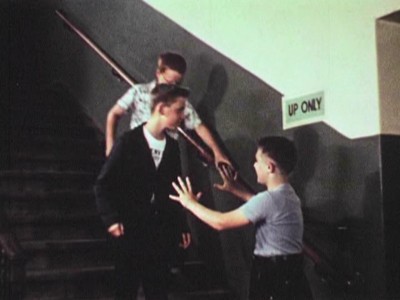
HOW QUIET HELPS AT SCHOOL
Coronet 1953 Color 10 min.
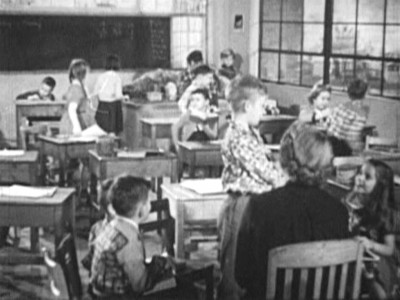
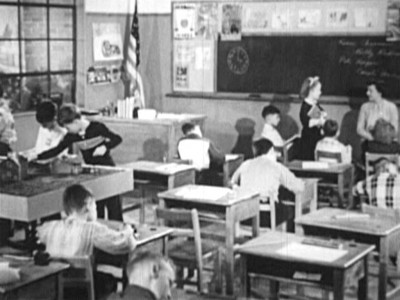
With all due respect to Skip Elsheimer, if these blissfully quiet kids are Stepford Children...how do we manufacture more of them? Have you been in a big-city classroom lately, or better yet: a public library? It's f*cking ridiculous, Skip. Do I think classrooms back in the 50s were as quiet and orderly and well-behaved as the one depicted here? No...not all the time, and not every classroom (I love the sickly nervous tension created here, akin to Fantastic Voyage levels, of whether or not doofus Billy is going to make the slightest sound in his trip to the dreaded supply closet). But I'd bet money they were certainly closer to How Quiet Helps at School's admittedly unrealistic depiction, than what goes on in today's classrooms. And if you find How Quiet Helps at School's depiction of rigid adherence to discipline and conformity troubling (or amusing) in that pre-1960s "school liberation" era, remember that those "primitive" American schools of yesteryear were the envy of the world (check out where we rank today...).
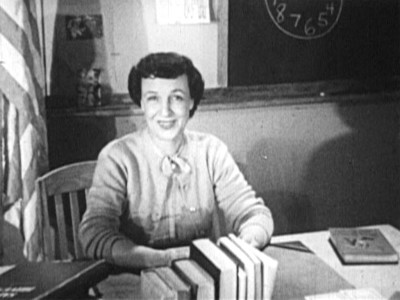
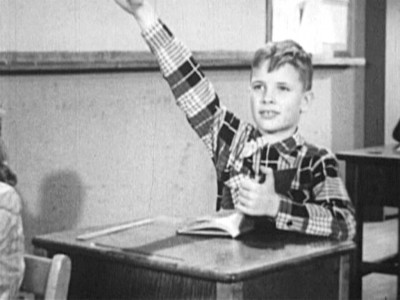
MANNERS IN SCHOOL
Centron / McGraw-Hill 1958 B&W 11 min.
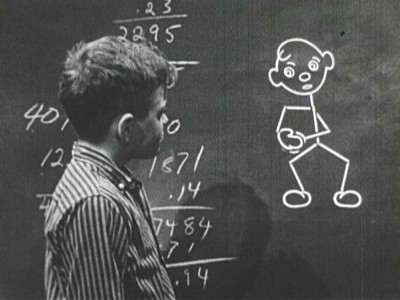
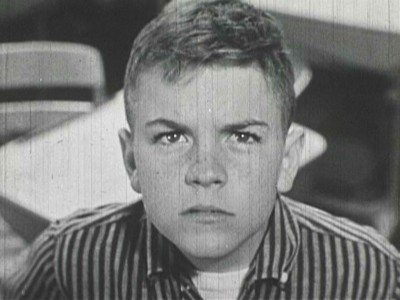
A classic educational short that they were still showing in classrooms when I was growing up in the early 1970s. Scripted by social guidance pro Margaret Travis, Manners in School is probably one of the more recognizable examples from the genre (wasn't it featured on MST3K once or twice?), with its bizarre battle between mean little snot Larry and his hectoring, insulting antagonist, Chalky. Was this Larry the inspiration for the mean little puppet on Pee Wee's Playhouse, with his cocky, Bowery Boys nose-thumbing? It's impossible not to laugh at genuinely funny little malcontent Larry and his barely submerged, violent rage (his reaction shots when he's messing with his teacher are priceless), while no doubt more than a few "good girls" in class who watched this short, dreamed of lowering their self-esteem by catching an adorable, freckled-faced "bad boy" like Larry. A good example of a social guidance film's execution obscuring the intended message...thankfully.
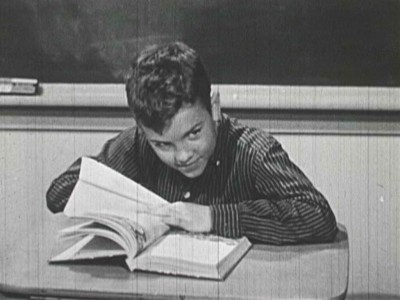
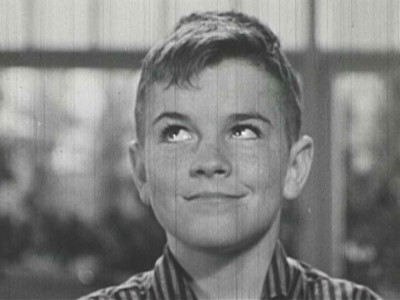
SAFE LIVING AT SCHOOL
Coronet 1948 B&W 10 min.
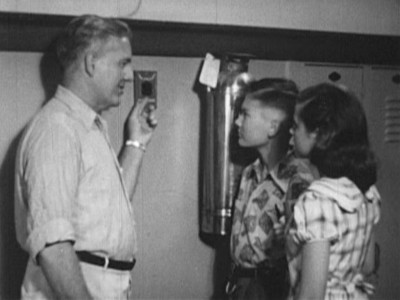
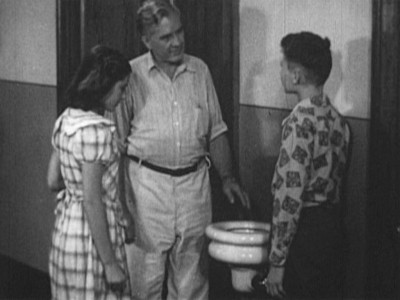
Did kids really crack their teeth on drinking fountains back then? Actually, I wouldn't be surprised if they did so on the "safety" fountain shown here―it looks like you have to stick your head right down in it to get a drink. Come to think of it...when you find yourself focusing on arcane crap like that, you quickly figure out that as a potentially funny educational short, Safe Living at School is rather disappointing. Fairly straight-forward in scripting and direction, the only mildly amusing notion here is the idea (today) that a couple of kids would be allowed to influence how their school is physically run (do they even have "Junior Safety Councils" anymore?). Pretty ho-hum...but try adding your own threatening dialogue from Ted when he stops that kid in the hallway.
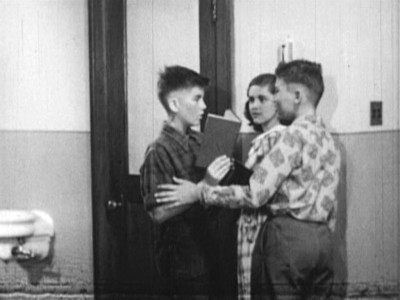
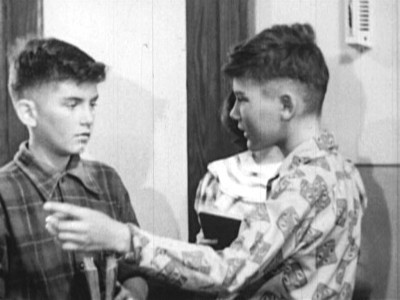
TAKE YOUR CHOICE
Jam Handy 1962 Color 12 min.
The Detroit Society for the Prevention of Blindness
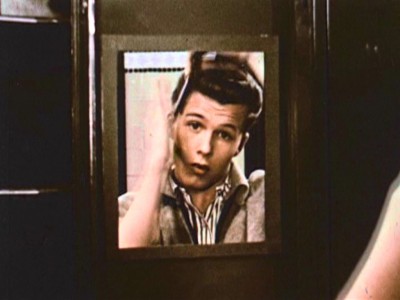
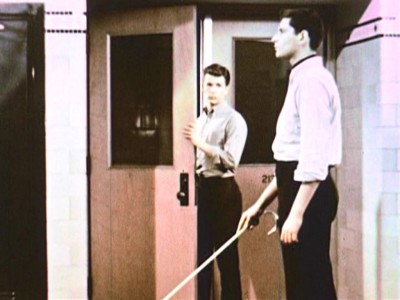
Shot at the beautiful (and now sadly bulldozed) Art Deco Mumford High School in Detroit (in typical spartan style, no one bothers to take just one pretty picture of the actual school used here), Take Your Choice is one of those giddily enjoyable "calamity" educational films that teases the viewer with the suspenseful pleasure of a horrible inevitableness: when will cocky Jeff finally blind himself? Too bad this Jam Handy effort cops out and lets Jeff off sans maiming―he's actually fine; they just trick us into thinking he messed up royally. Another example of where the filmmakers make the mistake of glamorizing the offender―who doesn't want to be like smooth charmer/jerk-off Jeff?―and romanticizing his plight (check out that Ross Hunter/Magnificent Obsession-worthy shot of Jeff, sartorially resplendent in his early 60s blindwear: perfectly-coiffed Princeton cut, black wrap-around Ray-Bans®, silky grey satin robe set off against crisply-pressed pajamas, and handsomely tortured face―how many chicks is he going to get cutting that tragic figure?).
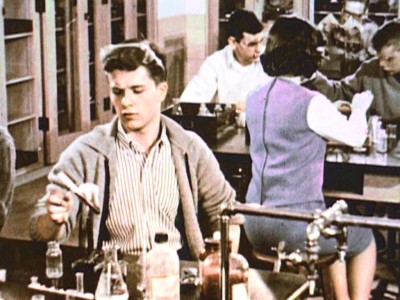
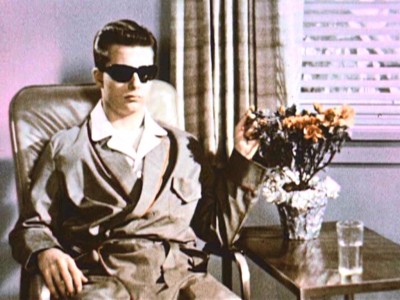
SCHOOL SPIRIT AND SPORTSMANSHIP
Coronet 1953 B&W 10 min.
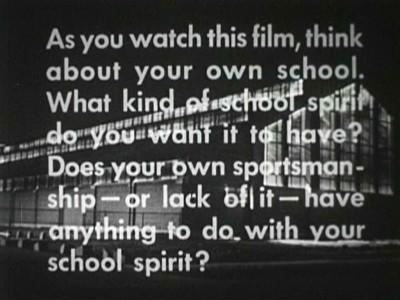
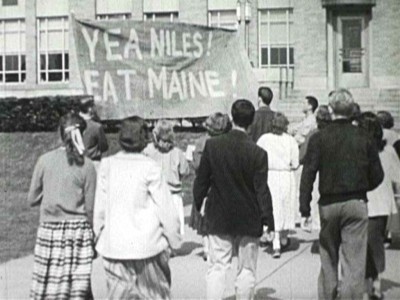
The anti-Slap Shot. Denied his right to exact vengeance on the punks who started the whole mess, Joe eventually learns that stink bombs in the opponents' locker room crosses some invisible, incomprehensible line between school spirit and bad sportsmanship (today, it would be between school spirit and a felony). A big tease, School Spirit and Sportsmanship may possibly work as a weak refresher course on being ethically and morally responsible students, but as ironic laugh-getter for today's smarmy viewer, it's a whiff shot: the filmmakers build everything up to the point where we really need, desperately need, to see that stink bomb go off...and then they chicken out. Tepid.
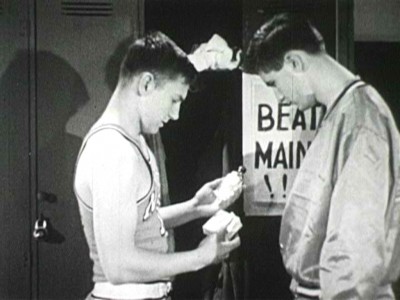
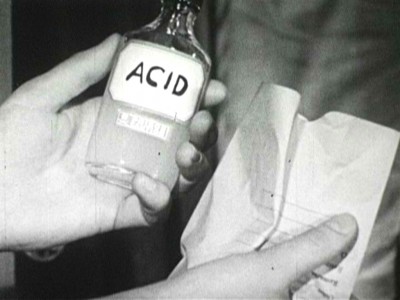
MAKING THE MOST OF SCHOOL
Coronet 1958 B&W 9 min.
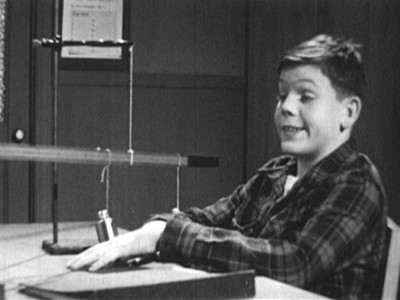
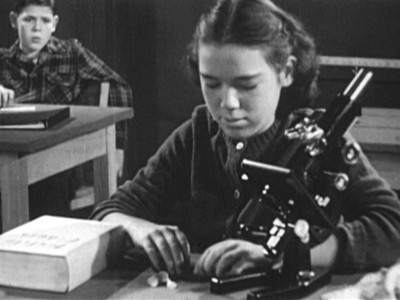
A claustrophobic (it all seems to take place in one cramped, tiny corner of a lab set), weirdly obsessive little educational film, Making the Most of School drives home the point, again and again, that Carl is wasting his time―a cardinal sin for kids who grew up with parents who still touted the last surviving remnants of the once-valued Puritan work ethic...but which is now considered a niche virtue, embodied by all those ironic gamer/slacker/hipsters out there. The worst part of Making the Most of School? I know I couldn't figure out that simple science experiment they're doing with the yard sticks and weights. The best part of Making the Most of School? Carl's wonderfully confused/couldn't-care-less performance.
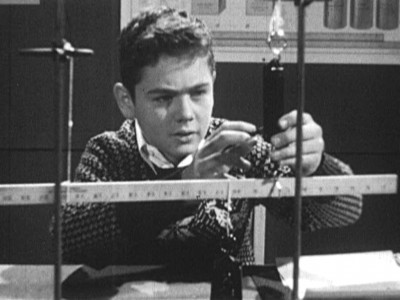
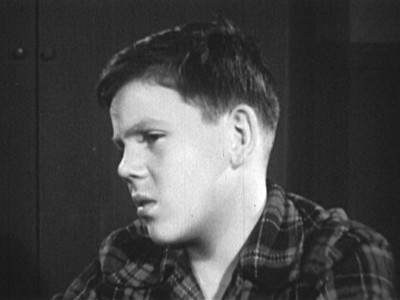
RESCUE MAN
Pennsylvania Department of Transportation 1982 Color 14 min.
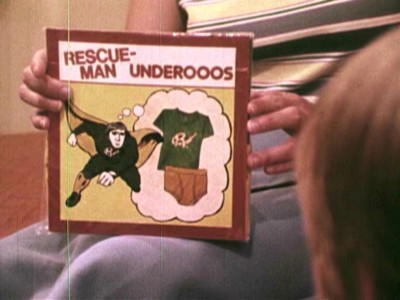
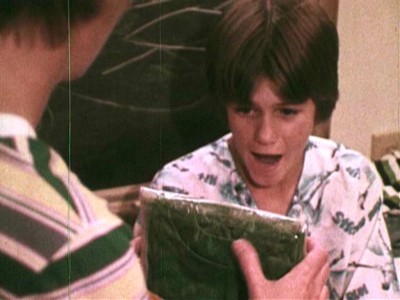
Admittedly, I got a little nervous when the overly attentive bus driver Mr. Bishop exclaimed to young Scotty, "Whoa, whoa, whoa! This is an exit, not an entrance!"...but everything turned out cool in the end. An unsuccessful mixture of straight-ahead instructional video on how to survive a bus emergency (zzzzzzzz), and conventional superhero wish-fulfillment fantasy, Rescue Man had to have played to a very young audience to have succeeded: the minute those Underoos are pulled out, the giggles probably didn't stop.
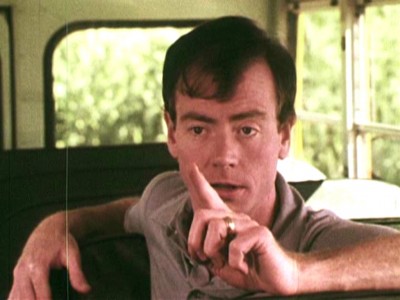
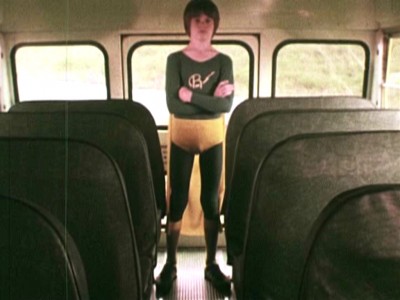
MIKE MAKES HIS MARK
Agrafilms 1952 Color 25 min.
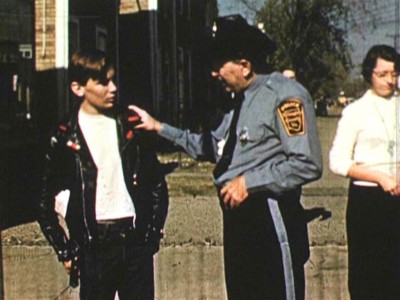
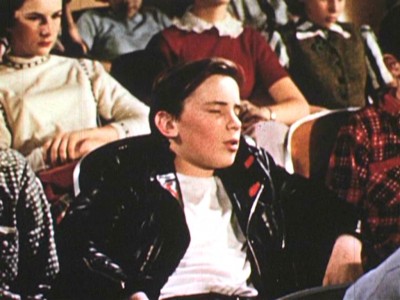
More straight-line set-ups than in 20 other social guidance films, Mike Makes His Mark still manages to effectively get across its message of coordinated outreach to troubled teens by not portraying the transformation as so easily accomplished. Mike immediately gets our sympathy when he tells the handsy beat cop to keep his meathooks offa him, and his status as "dreamy leather boy trouble" is firmly established when he starts tapping out some jazzy beat at a boring class assembly. But after the unintentional laughs die down (Miss Dewey exclaims that "Charley is as big as any man,"...oh Miss Dewey!), you really start to pull for Mike, especially after seeing his less-than-encouraging household (Dad's not too keen on Mike excelling at anything). The sincerity of the piece seems slightly silly―but that's only because of the too-earnest, too-square presentation by the performers. A better-than-average educational film that benefits from its longer run time.
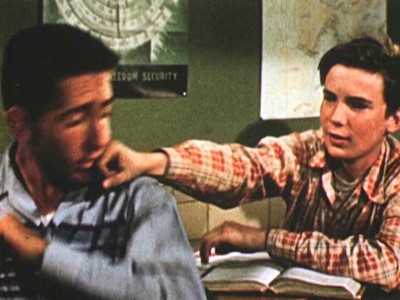

NOONTIME NONSENSE
Emerson Film Corp. 1955 B&W 13 min.
National Safety Council
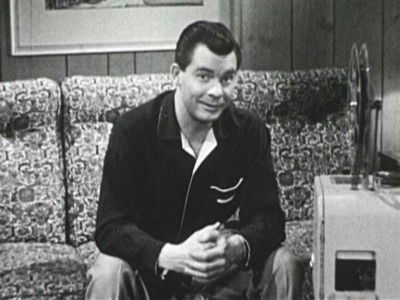
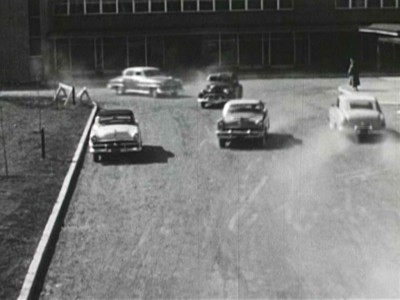
No wonder this isn't really a problem anymore...who the hell gets a whole hour for lunch anymore at schools? I was probably among the last age group of kids who had enough time at lunch to walk home and eat and then return to school, so I can remember the nearby high school kids peeling out in their El Caminos and Darts and 'Cudas. Watching Noontime Nonsense, though, the movie's biggest problem is that it shows no real consequences of the problem its detailing. Where are the gory roadside slaughterhouse scenes from classics like Signal 54 to scare the bejeezus out of those hot rod punks? In Noontime Nonsense, we see some silly screeching of tires and comical parking lot mishaps, and the rest is committee meetings and DJs. And who cares if the kids take charge? If their solution is square-dancing...let them go back to smashing up their rides.
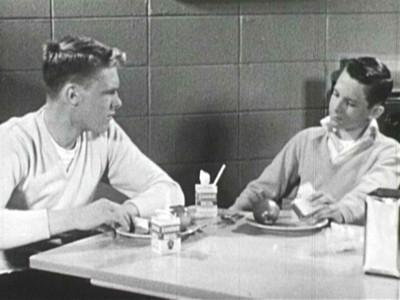
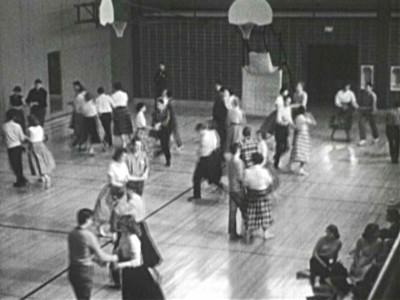
BONUS SHORTS: A TEACHER'S GUIDE
MAINTAINING CLASSROOM DISCIPLINE
Caravel Films 1947 B&W 14 min.
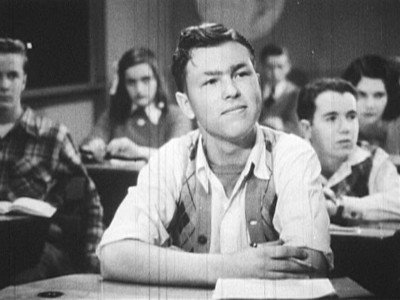
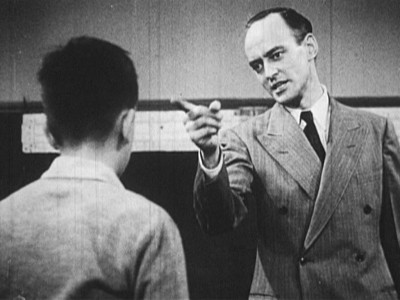
He's hardly "old," and he doesn't transform into a good teacher. Instead, Maintaining Classroom Discipline is presented like a Sidney Poitier double-features: part Blackboard Jungle, part To Sir, With Love. What's fascinating about the movie's thesis (if you pal and joke around with the kids and show some understanding, they'll flower) is that in reality, both approaches―being a complete dick and being Mr. Novak―can yield the same results only switched...and it's far more likely to be vice versa. Lots more fun during the first feature, when the students amusingly start to turn on the shaken teach.
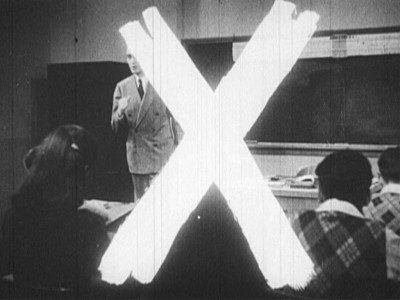
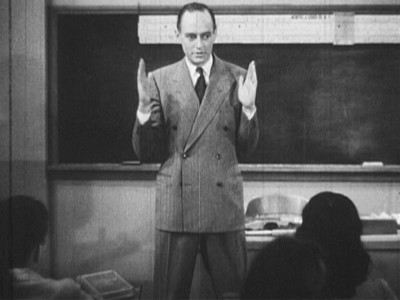
WHEN SHOULD GROWN-UPS STOP FIGHTS?
The Department of Child Study, Vassar College 1955 B&W 14 min.
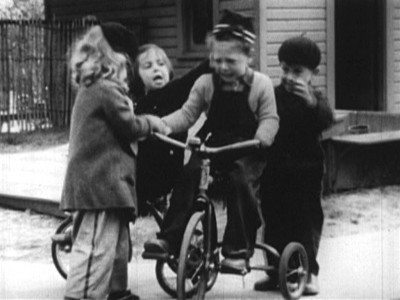
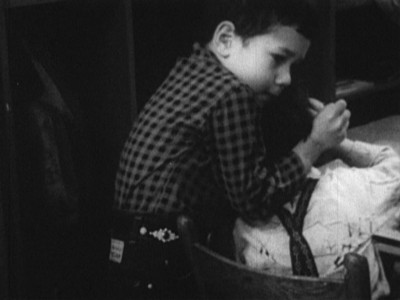
Completely fascinating hidden camera footage of little kids fighting, When Should Grown-Ups Stop Fights? pretty much answers its own question 9 out of 10 times: never. It's heartbreaking to see one little child cry in terror as it's set upon by three others...but the filmmakers don't use that example in their final viewer quiz because the answer is too obvious. "...in the direct manner of 3-year-olds." got the biggest laugh here when one kid belts another one, while I found it most fascinating, especially in today's wrong-headed, zero-tolerance, wussification society, to hear the narrator dismiss abuse to a victim when said victim turns right around and puts his aggressor in a nice headlock ("the victim can obviously take care of himself," says the narrator...but he'd better have an attorney in today's schools).
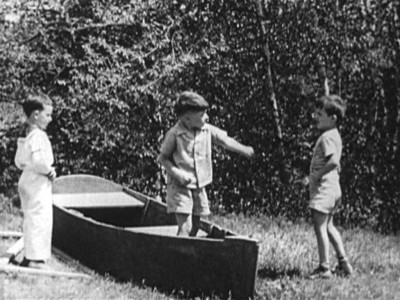
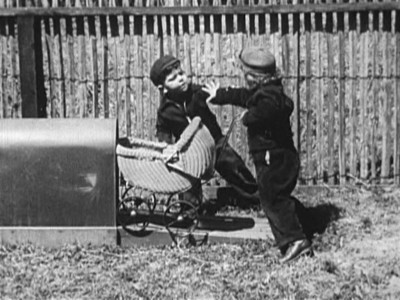
CIVIL DEFENSE IN SCHOOL
Norwood Studios, Inc. 1959 B&W 23 min.
The Office of Civil and Defense Mobilization
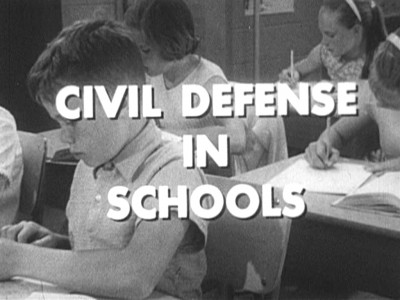
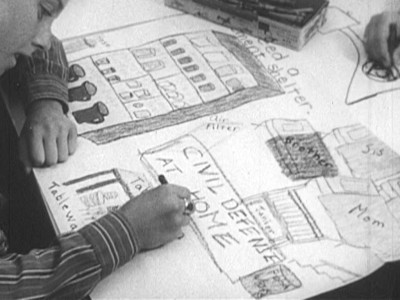
Dig that crazy school shelter: two weeks worth of food, other supplies for all the students and faculty...and room to have a dance? You can pretty much disregard the actual advice on surviving a nuclear attack, although I found it interesting to see the movie turn the terrifying notion of such an occurrence into a necessary, even every-day, matter-of-fact preparation that needed to be addressed as a matter of personal responsibility (beats putting your head in the sand, I guess...). Best of all, I just enjoyed the incongruity of the set-ups compared with today's namby-pamby, weak-kneed society. Check out all the stogies at the school board meeting (can you see the indignant outrage today?), and how about how everyone was dressed. Someone once wrote that the single most lasting effect of the 60s counterculture revolution was the complete obliteration of the formal dress code in America, and one has to agree when you see something like Civil Defense in School. We dressed like winners back then: Cold War warriors with razor cuts and sharp suits, and women dolled up even for mundane social encounters. Is it any wonder no one takes us seriously anymore, when we look like a nation of middle-aged adolescents, in T-shirts and ball caps and tennis shoes and sweats?
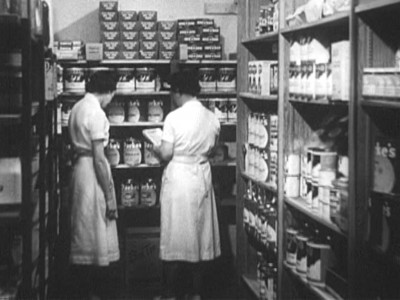
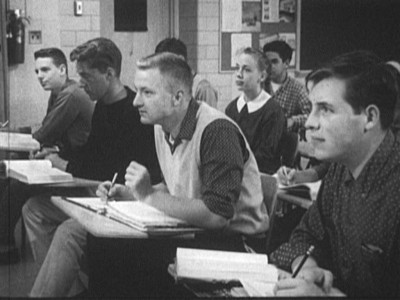
ADULT GUARDS FOR SCHOOL CROSSINGS
Dallas Jones Productions 1960 B&W 6 min.
National Assn. of Automotive Mutual Insurance Companies
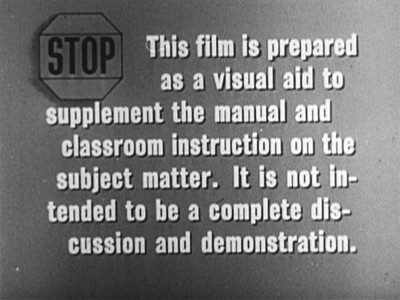
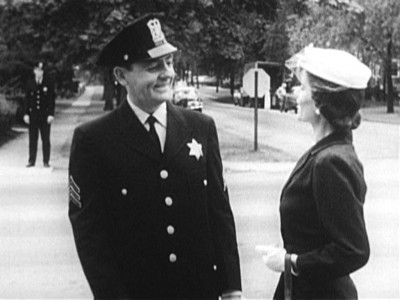
Fairly straightforward entry here, made amusing by the complete lack of protection prospective Mrs. Roberts is going to get when she jumps out into traffic for the first time. This must have been before there were any laws on the books about mandatory stopping for crossing guards, because the Car 54, Where Are You? flatfoot tells her straight: you ain't no cop, so good luck, and remember to bob and weave. Lots of print shrinkage and gate jumping here.
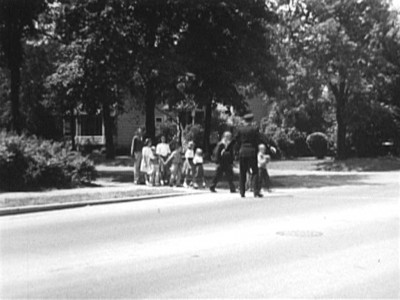
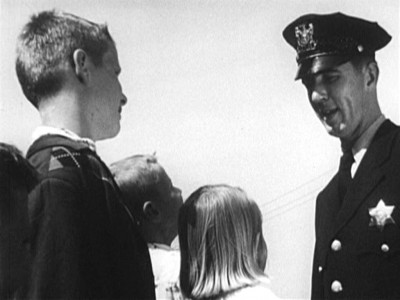
STORY-TELLING: CAN YOU TELL IT IN ORDER?
Coronet 1953 Color 10 min.
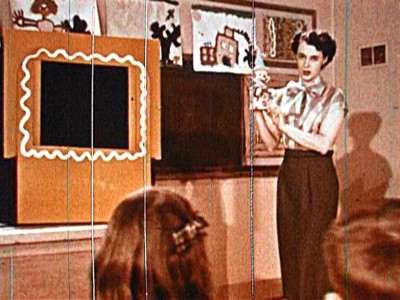

What more needs to be written about the infamous Story-Telling: Can You Tell It in Order? that hasn't already been said? Imagine John Wayne Gacy as your kid's private storytime teacher, and you have a fair approximation of it. The stark, black-box set decoration is disturbing enough, but when that clown starts laughing...sweet jumping jesus. I'll tell you "What Happened 1st?": the little kids in the classroom started crying. A flat-out classic of the genre.
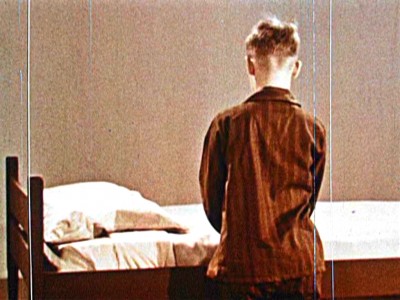
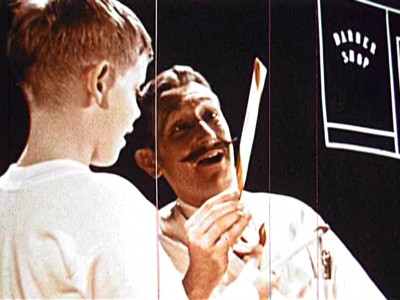
The DVD:
The Video:
Expect the worst, and you'll be okay with Classic Educational Shorts, Volume 5: Rules for School. Lots of scratches and dirt and faded color here from the full-screen, 1.33:1 transfers of the original 16mm elements. But who cares?
The Audio:
The English mono audio track is equally harsh, with lots of hiss. But at least you don't hear that clanking projector....
The Extras:
I'm not counting those five "bonus" shorts as true bonuses. It's a fifteen disc collection.
Final Thoughts:
Whether you're watching these orphaned educational/social guidance films for laughs or for insight (better be careful on that last score....), it's impossible not be taken in by the charm of their melodrama, their unintentional humor, their at-times inexplicable wrong-headedness, their sometimes surprising deftness and understanding, and especially their ineptitude. Classic Educational Shorts, Volume 5: Rules for School scores an easy DVDTalk "highly recommended" rating.
Paul Mavis is an internationally published film and television historian, a member of the Online Film Critics Society, and the author of The Espionage Filmography.

|
| Popular Reviews |
| Sponsored Links |
|
|
| Sponsored Links |
|
|
| Release List | Reviews | Shop | Newsletter | Forum | DVD Giveaways | Blu-Ray | Advertise |
|
Copyright 2024 DVDTalk.com All Rights Reserved. Legal Info, Privacy Policy, Terms of Use,
Manage Preferences,
Your Privacy Choices | |||||||













